USRA prototype. The United States Railroad Administration (USRA) was the government agency that operated U.S. railroads during the First World War. During its tenure, the agency developed a dozen USRA standard steam locomotive designs for service nationwide.
This massive 2-8-8-2 Mallet articulated was the largest of these USRA locomotives. It was 105′-2″ long, stood 15′-9″ tall, and weighed 531,000 pounds. Mallet articulateds were compound engines that used their steam twice: first in the rear high-pressure cylinders and then in the front low-pressure cylinders.
American Locomotive Co. (Alco) and the Baldwin Locomotive Works built 80 USRA 2-8-8-2s in 1919 that were allocated to Appalachian coal-haulers. The USRA sent 50 to Norfolk & Western, 20 to the Virginian, and 10 to the Clinchfield. All three companies, plus the Denver & Rio Grande Western and the Northern Pacific purchased additional copies of these locomotives after the war. Many of these big 2-8-8-2s were used until the mid-1950s.
Three different highly detailed plastic boiler shells, three cabs, and two sets of cylinders are employed to produce these specific prototype locomotives. Wire piping and more than 120 detail parts have been applied by hand. The cab interiors include a detailed backhead, crew seats, and sliding side windows.
All of the models have an N&W pilot, but it can easily be removed and replaced with other types.
Interlocking parts and a single screw, concealed under the removable steam dome, hold the boiler shell in place. It covers a massive cast-metal weight that fills most of the space within the boiler.
The chassis is similar to that on other recent model articulateds. A large can motor fitted with a pair of machined flywheels is enclosed in the middle of the boiler just ahead of the firebox. It drives both engines through concealed universal shafts.
Each eight-drivered engine has a cast-metal frame with a gearbox extending vertically into the boiler. Both engines swivel and rock slightly under the boiler so all of the drivers contact the rails for maximum tractive effort. This design allows the model to negotiate an 18″-radius curve, and it reduces the end overhang. (Prototype articulateds have the rear engine rigidly attached to the boiler; a hinged joint allows the front engine to swing from side to side on curves.)
The USRA 16-ton, 12,000-gallon tender rides on detailed Andrews trucks that also pick up electrical current. It has a plastic body and a die-cast metal floor.
Electronic system. A QSI Quantum sound and DCC control system is concealed within the tender. This decoder automatically senses and operates on conventional DC and on DCC systems. Its sounds are delivered by twin speakers facing downward on the tender floor.
A 20-page operations manual explains all of the sound and DCC system’s capabilities and how they may be adjusted. A built-in magnetic reed switch is provided to reset everything to the factory default settings. This switch is located behind the coal bunker where it can be activated with a magnetic wand without removing the tender shell.
The power requirements of the dual-mode QSI system give the model a fairly high starting voltage. This setting can be adjusted for more throttle control range, but the minimum is still nearly 5 volts.
The model will fit on a scale 100-foot (14″ diameter) turntable.
Our sample Virginian model came neatly painted in a smooth satin black with a realistic graphite color on the smokebox and firebox. All of the printed lettering was sharp and opaque.
Overall, this locomotive is a superb “big engine.”
Price: $525 with sound and DCC, $425 DC only
Manufacturer
Life-Like Products Inc.
1600 Union Ave.
Baltimore, MD 21211
www.lifelikeproducts.com
Description
Ready-to-run plastic-and-metal steam locomotive
Road names
(two engine numbers with sound
and DCC, one without)
Virginian (nos. 714, 716, and 719), Clinchfield (nos. 735, 742, and 744), Denver & Rio Grande Western (nos. 3502, 3506, and 3509), Norfolk & Western (nos. 2009, 2020, and 2028), Northern Pacific (nos. 4501, 4502, and 4503), and unlettered
Features
Automatic dual-mode DC or
DCC and sound control system
Constant directional lights
DC models have NMRA DCC plug
Drawbar pull: 3.4 ounces
Engine and tender weight: 26
ounces; engine alone is 20 ounces
Five-pole can motor with dual
turned-brass flywheels
Minimum radius: 18″
Proto 2000 magnetic knuckle
couplers mounted at the proper
height on both ends
RP-25 contour wheels (in gauge)
Prototype detailing with Baker or
Walschaerts valve gear
16-wheel drive and 22-wheel
electrical pick-up





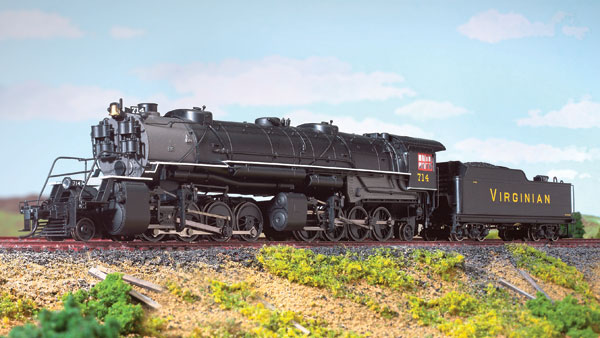
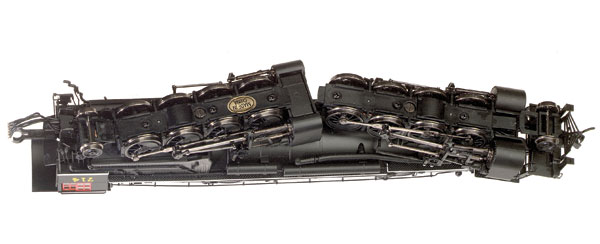
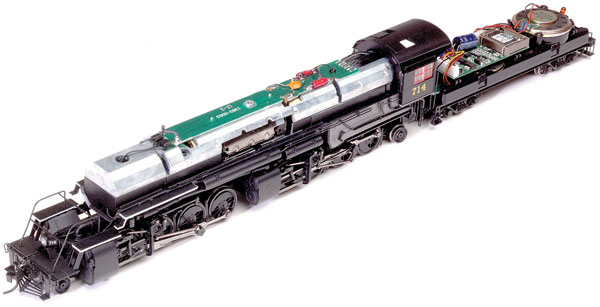
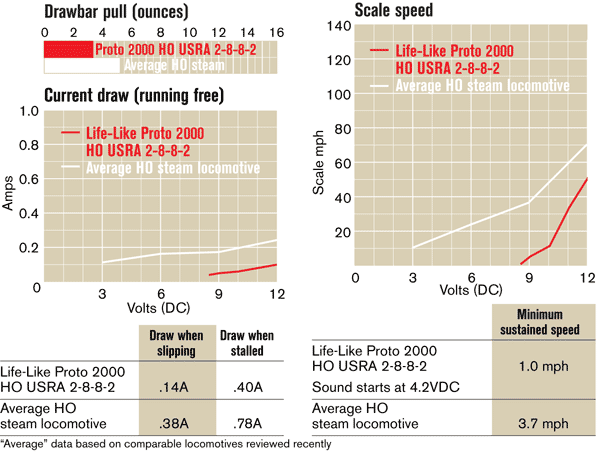


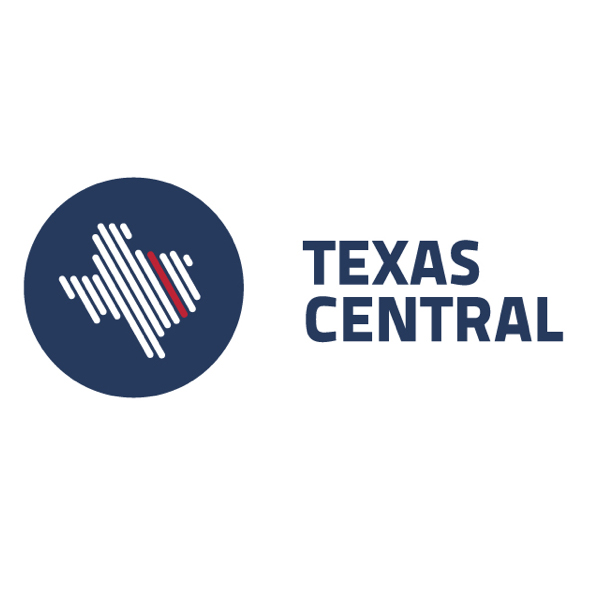

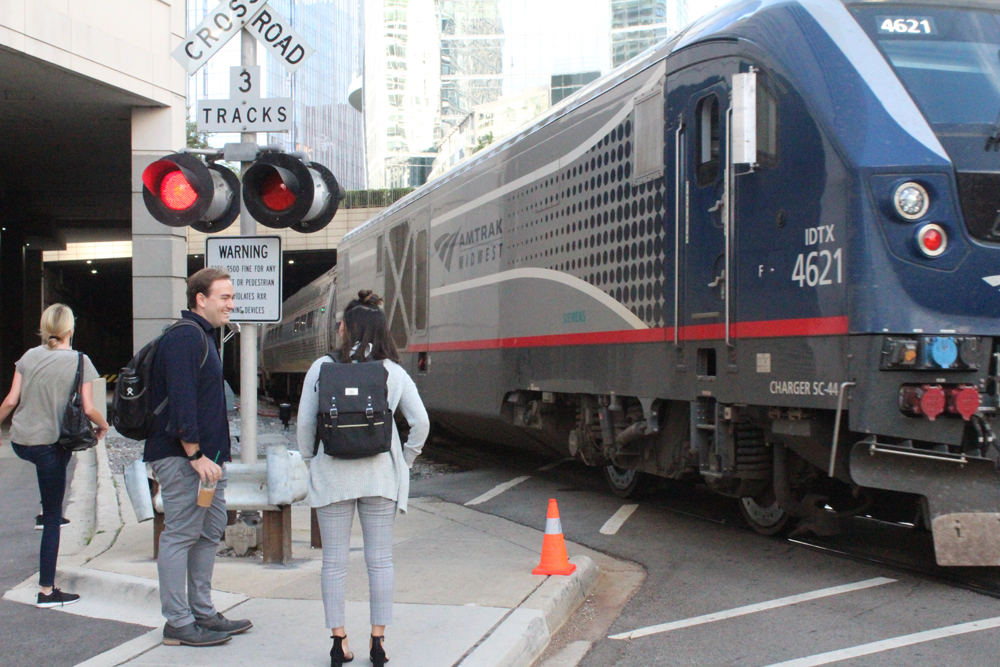




When I was a member of the Rio Grande Valley, Model Railroad Club in Albuquerque, New Mexico I ran my 2-8-8-2 with 100 freight cars behind it at a top spead of around 30 scale miles per hour with no trouble.
I did however add more weight th the engine for more traction. It is an excellent machine.
As others have written, this if the smoothest operating steam locomotive I own (even though it is by far the largest.) Superbly detailed and reasonably priced.
Comparing it to my Prescision Craft T1 4-8-4 steam locomotive (with sound), I am somewhat dissapointed with the Proto 2000 2-8-8-2 (with sound) for the following reasons: (1) PULLING POWER: at 3 % grade hauling 28 free rolling tank cars, the Proto slide to a halt with all 16 driving wheels spinning but the T1 4-8-4 kept a steady speed even with 35 cars. (2) SOUND: the T1 4-8-4 sounds more like the prototype whereas the Proto sounds more like it is computer generated.
However, I will give the Proto a "Plus" for its COUPLER CRASH and the DOPPLER EFFECT.
not quite th presicion craft y6b but a good buy for the price
I now have 3 of thses beautiful locos, 2 without sound, and 1 with sound. The sound is AWESOME and the detailing is too!!
I have one of the dc none sound equipped versions. This is without a doubt the finest locomotive I own. Perfect for a long coal drag!
I have one of these locos, It is the smoothest running steam loco I have.